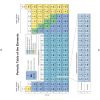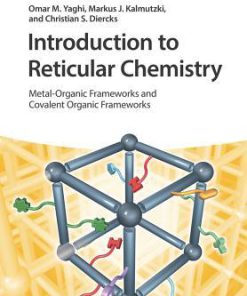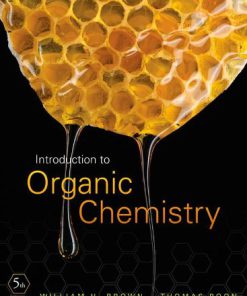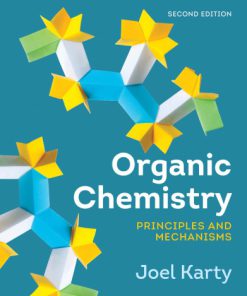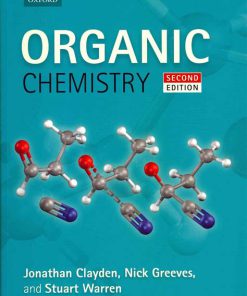Electron Flow in Organic Chemistry A Decision Based Guide to Organic Mechanisms 2nd Edition by Paul H Scudder ISBN 0470638044 9780470638040
$50.00 Original price was: $50.00.$25.00Current price is: $25.00.
Electron Flow in Organic Chemistry A Decision Based Guide to Organic Mechanisms 2nd Edition by Paul H Scudder – Ebook PDF Instant Download/Delivery: 0470638044, 9780470638040
Full download Electron Flow in Organic Chemistry A Decision Based Guide to Organic Mechanisms 2nd Edition after payment
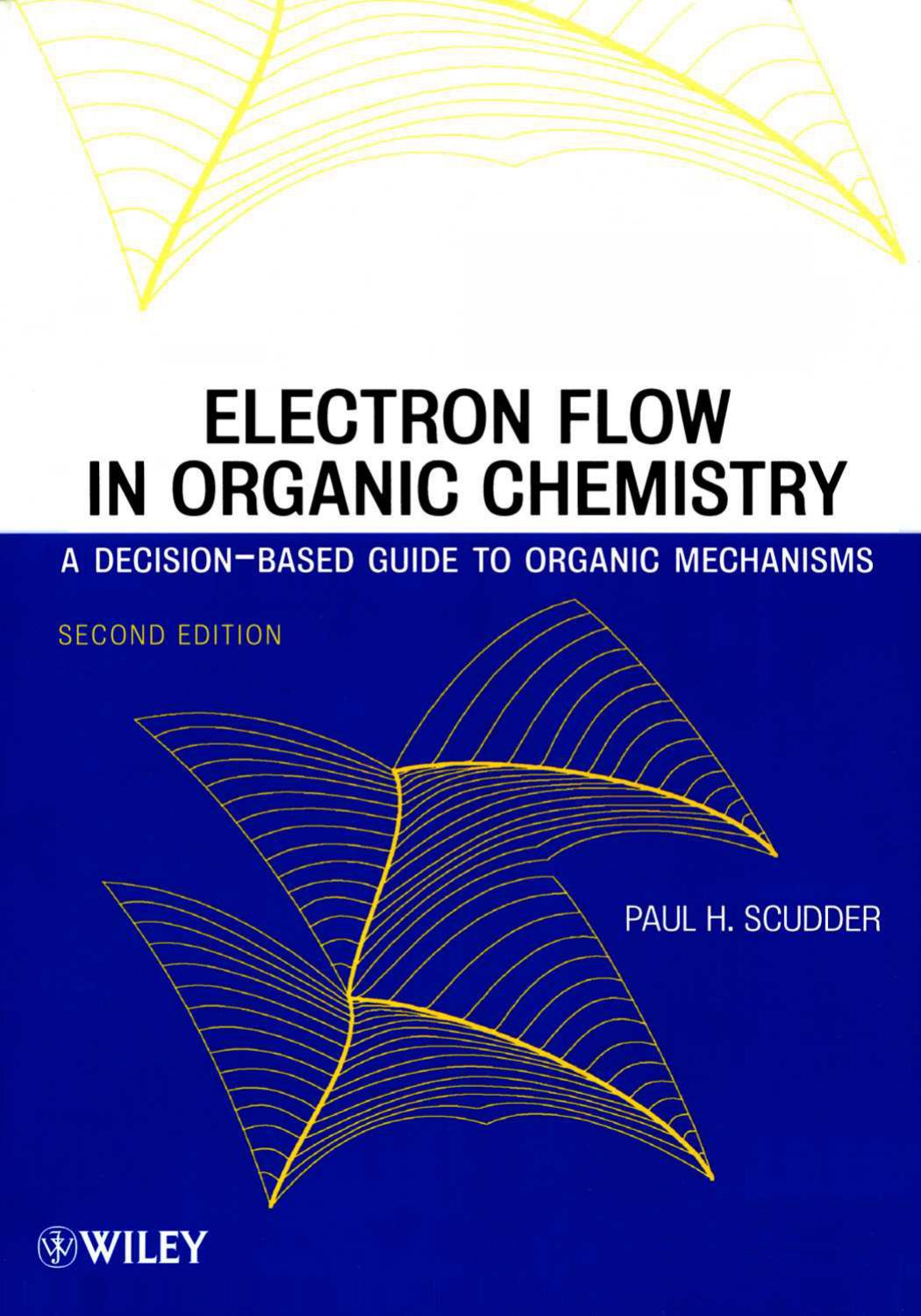
Product details:
ISBN 10: 0470638044
ISBN 13: 9780470638040
Author: Paul H Scudder
With its acclaimed decision-based approach, Electron Flow in Organic Chemistry enables readers to develop the essential critical thinking skills needed to analyze and solve problems in organic chemistry, from the simple to complex. The author breaks down common mechanistic organic processes into their basic units to explain the core electron flow pathways that underlie these processes. Moreover, the text stresses the use of analytical tools such as flow charts, correlation matrices, and energy surfaces to enable readers new to organic chemistry to grasp the fundamentals at a much deeper level.
This Second Edition of Electron Flow in Organic Chemistry has been thoroughly revised, reorganized, and streamlined in response to feedback from both students and instructors. Readers will find more flowcharts, correlation matrices, and algorithms that illustrate key decision-making processes step by step. There are new examples from the field of biochemistry, making the text more relevant to a broader range of readers in chemistry, biology, and medicine. This edition also offers three new chapters:
- Proton transfer and the principles of stability
- Important reaction archetypes
- Qualitative molecular orbital theory and pericyclic reactions
The text’s appendix features a variety of helpful tools, including a general bibliography, quick-reference charts and tables, pathway summaries, and a major decisions guide.
With its emphasis on logical processes rather than memorization to solve mechanistic problems, this text gives readers a solid foundation to approach and solve any problem in organic chemistry.
Electron Flow in Organic Chemistry A Decision Based Guide to Organic Mechanisms 2nd Table of contents:
-
Chapter 1: Fundamentals of Electron Flow
- Understanding Electron Movement in Organic Chemistry
- The Role of Curved Arrows and Electron Density
- Formal Charge, Bond Polarity, and Reaction Intermediates
-
Chapter 2: Nucleophiles and Electrophiles
- Defining Nucleophiles and Electrophiles
- Reactivity Patterns and How to Identify Key Participants in Reactions
- Electron-Demand and Electron-Rich Species
-
Chapter 3: Mechanism Classification and Decision Trees
- A Decision-Based Approach to Mechanism Understanding
- Classifying Reactions: Substitution, Elimination, Addition, and Rearrangement
- Step-by-Step Mechanistic Pathways: A Flowchart Approach
-
Chapter 4: Substitution Mechanisms
- The SN1 and SN2 Mechanisms: A Comparative Analysis
- Factors Influencing SN1 vs. SN2 Reactions
- Electron Flow and Intermediate Formation in Substitution
-
Chapter 5: Elimination Mechanisms
- The E1 and E2 Mechanisms: Key Differences and Electron Flow
- Base Strength and Structure Effects on Elimination
- Decision Trees for E1 vs. E2 Reactions
-
Chapter 6: Addition Reactions
- Addition to Alkenes: Electrophilic Addition vs. Nucleophilic Addition
- Markovnikov and Anti-Markovnikov Addition
- Regioselectivity and Stereoselectivity in Addition Reactions
-
Chapter 7: Radical Reactions
- Mechanism of Radical Chain Reactions: Initiation, Propagation, and Termination
- Radical Stability and the Role of Electron Flow in Radical Reactions
- Decision-Making in Radical Mechanisms: How to Identify Radicals
-
Chapter 8: Pericyclic Reactions
- Overview of Pericyclic Mechanisms: Concerted Reactions and Electron Flow
- Cycloaddition, Sigmatropic Rearrangements, and Electrocyclic Reactions
- The Woodward-Hoffmann Rules and Electron Flow in Pericyclic Processes
-
Chapter 9: Aromatic Substitution and Electron Flow
- Electrophilic Aromatic Substitution (EAS) Mechanism
- Nucleophilic Aromatic Substitution (NAS) and Electron Flow in Aromatic Systems
- Effects of Substituents on Electron Flow and Reactivity in Aromatic Compounds
-
Chapter 10: Understanding Reaction Intermediates
- Carbinyl Cations, Carbanions, Free Radicals, and Carbenes
- How Intermediates Shape Reaction Mechanisms and Electron Flow
- Stabilization and Reactivity of Different Types of Intermediates
-
Chapter 11: Intramolecular Reactions and Ring Formation
- Electron Flow in Intramolecular Substitutions and Eliminations
- Mechanisms of Ring Closure Reactions: Formation of Cyclic Compounds
- Decision-Based Approach to Predicting Intramolecular Mechanisms
-
Chapter 12: Multistep Mechanisms
- Complex Reactions Involving Multiple Steps
- How to Break Down Multistep Mechanisms Using Electron Flow Principles
- Decision-Based Approaches for Complex Organic Reactions
-
Chapter 13: Exploring Stereochemistry in Mechanisms
- Stereochemistry and Its Relationship with Electron Flow
- Stereoselectivity in Substitution, Elimination, and Addition Reactions
- Using Electron Flow to Predict Product Stereochemistry
-
Chapter 14: Mechanistic Case Studies
- Case Studies in Organic Chemistry: Real-World Applications of Mechanisms
- Applying Electron Flow Concepts to Solve Mechanistic Problems
- Detailed Analysis of Specific Reactions and Pathways
People also search for Electron Flow in Organic Chemistry A Decision Based Guide to Organic Mechanisms 2nd:
electron flow in organic chemistry
electron flow in organic chemistry pdf
electron flow symbol
how does electron flow work
electron structure of cl
Tags:
Paul H Scudder,Electron Flow,Organic Chemistry
You may also like…
Engineering - Chemical Engineering
Chemistry - Organic Chemistry
Introduction to Organic Chemistry 5th Edition William H. Brown
Chemistry
Organic chemistry principles and mechanisms 2nd Edition by Joel Karty 0393630756 9780393630756
Chemistry
Organic Chemistry Principles and Mechanisms 1st Edition by Joel Karty 0393919048 978-0393919042
Chemistry - Organic Chemistry
Organic Chemistry 8th Edition William 1305865596 9781305865594
Chemistry - Organic Chemistry


